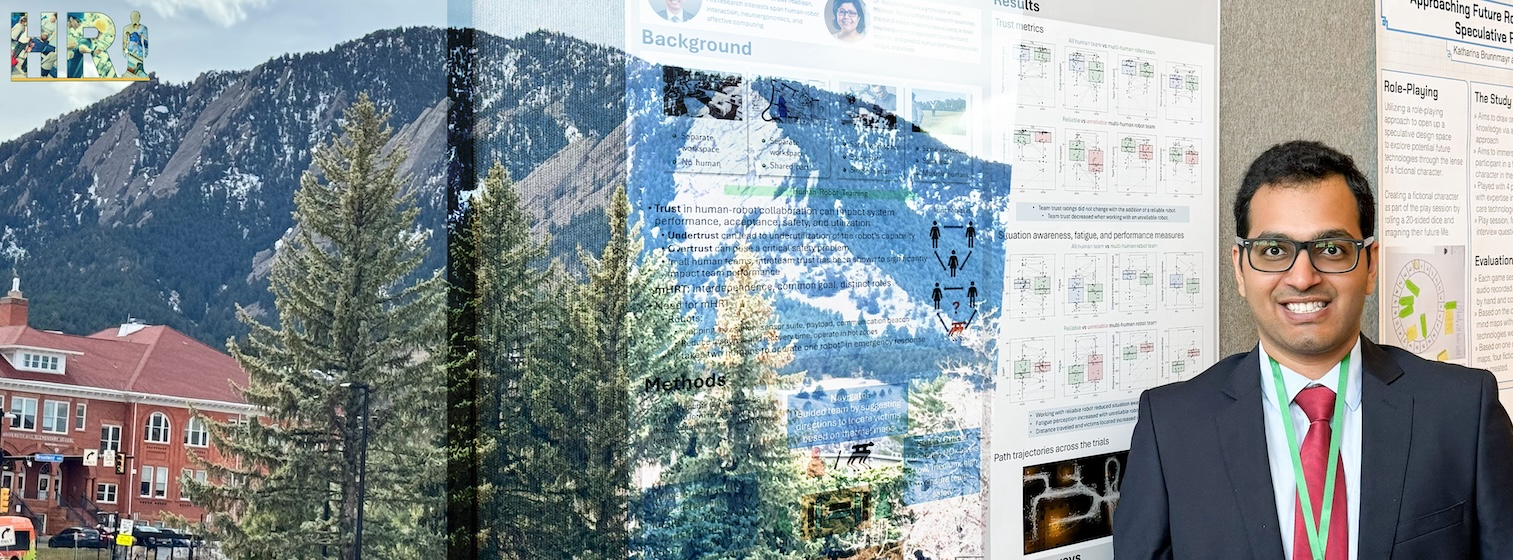HRI 2024: Beyond Dyadic Interactions: Assessing Trust Networks in Multi-Human-Robot Teams

Aakash Yadav from the Neuroergonomics Lab at the University of Wisconsin-Madison, Madison, WI, USA, presented their work on “Beyond Dyadic Interactions: Assessing Trust Networks in Multi-Human-Robot Teams” at the 2024 ACM/IEEE International Conference on Human-Robot Interaction (HRI 2024). The paper was co-authored with Dr. Ranjana K. Mehta.
Yadav, A., & Mehta, R. (2024). Beyond Dyadic Interactions: Assessing Trust Networks in Multi-Human-Robot Teams. In Companion of the 2024 ACM/IEEE International Conference on Human-Robot Interaction (pp. 1153–1157). Association for Computing Machinery. https://doi.org/10.1145/3610978.3640576.
The publication (open-access) can be accessed at https://doi.org/10.1145/3610978.3640576.
Abstract
Many HRI applications (such as in search and rescue; SAR) require multiple humans to interact with robot agents, making it essential to understand and evaluate both the trust in robots and trust in teams when robots are embedded into such team structures. In the present study, we utilized a virtual urban search and rescue task to compare individual and team trust and associated team performances between (1) all-human and multi-human-robot teams (mHRTs) with reliable robot behavior, and (2) mHRTs with reliable and unreliable robot behaviors. The team structure included a mission specialist (human), a navigator (human or robot), and a safety officer (human). Utilizing apriori pair-wise comparisons, we found that the human navigator was trusted more than the reliable robot navigator by other teammates and that the trust in the robot navigator declined when it performed unreliably. Interestingly, team trust remained comparable between all humans and mHRT (under reliable conditions), but the mHRT team trust levels declined under unreliable robot conditions. Trust between the human dyads was not affected by the actions of the third agent (whether human or robot). Finally, while introducing a reliable robot teammate did not improve team performance, robot unreliability significantly improved performance on the SAR task. The study captures changes in trust networks between human teammates by introducing robots with varying performances.